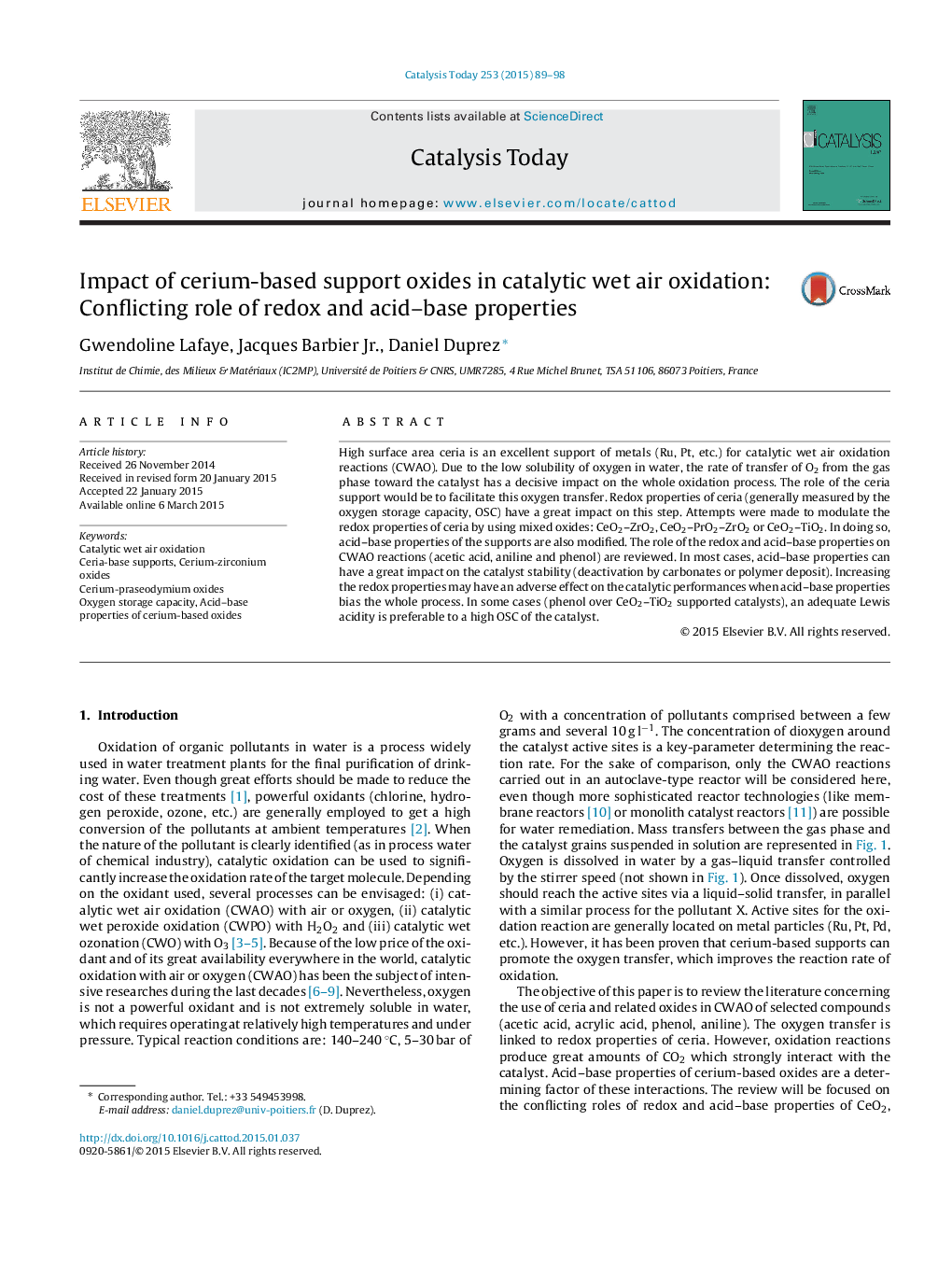| Article ID | Journal | Published Year | Pages | File Type |
|---|---|---|---|---|
| 53427 | Catalysis Today | 2015 | 10 Pages |
•Ceria-based oxides are excellent supports of metals for catalytic wet air oxidation reactions: they favor oxygen transfer from solution to metals.•Increasing redox properties (ceria doped with Zr and/or Pr) may decrease oxidation activity: basic sites block oxygen transfer by formation of carbonates.•Nitrogen containing compounds requires redox sites of medium forces. If too weak, nitrogen is transformed into ammonium ions; if too strong, nitrites and nitrates are formed.•Lewis acid sites are favorable in CWAO of phenol: less polymers are formed. Redox sites tend to favor these polymers.
High surface area ceria is an excellent support of metals (Ru, Pt, etc.) for catalytic wet air oxidation reactions (CWAO). Due to the low solubility of oxygen in water, the rate of transfer of O2 from the gas phase toward the catalyst has a decisive impact on the whole oxidation process. The role of the ceria support would be to facilitate this oxygen transfer. Redox properties of ceria (generally measured by the oxygen storage capacity, OSC) have a great impact on this step. Attempts were made to modulate the redox properties of ceria by using mixed oxides: CeO2–ZrO2, CeO2–PrO2–ZrO2 or CeO2–TiO2. In doing so, acid–base properties of the supports are also modified. The role of the redox and acid–base properties on CWAO reactions (acetic acid, aniline and phenol) are reviewed. In most cases, acid–base properties can have a great impact on the catalyst stability (deactivation by carbonates or polymer deposit). Increasing the redox properties may have an adverse effect on the catalytic performances when acid–base properties bias the whole process. In some cases (phenol over CeO2–TiO2 supported catalysts), an adequate Lewis acidity is preferable to a high OSC of the catalyst.
Graphical abstractFigure optionsDownload full-size imageDownload high-quality image (127 K)Download as PowerPoint slide
